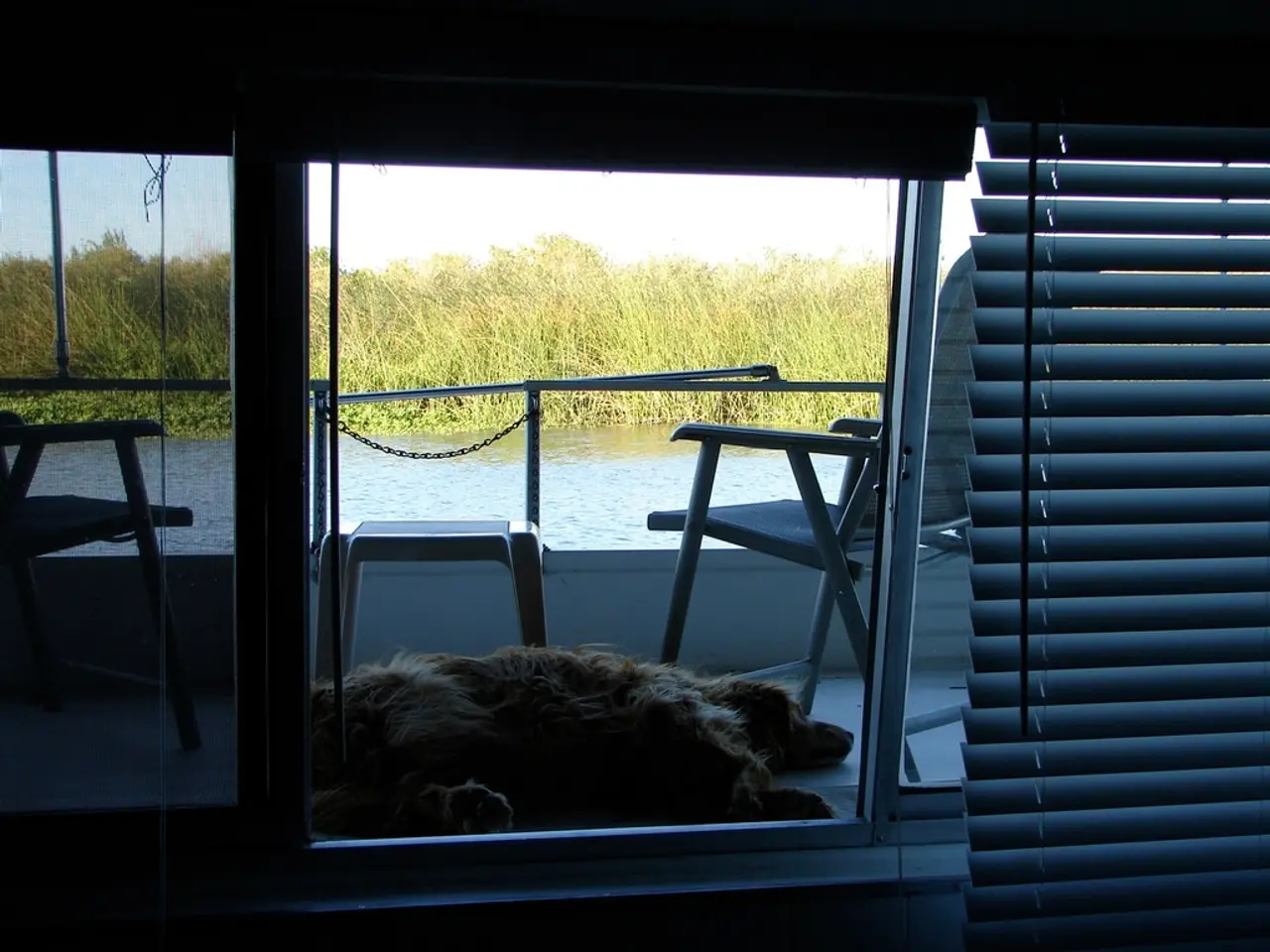Precautions for Canine Comfort During Hot Weather
### Keeping Your Dog Safe During Summer: A Guide to Heat-Related Conditions and Prevention
As the summer months arrive, it's essential to be aware of the potential risks to our canine companions. Here's a comprehensive guide on identifying heat-related conditions in dogs, handling them, and taking preventive measures to ensure their safety and comfort.
#### Identifying Heat-Related Conditions
Dogs can suffer from heat exhaustion and heatstroke, which can be life-threatening if left untreated. Common symptoms include excessive panting and drooling, rapid or labored breathing, bright red or dehydrated gums and tongue, lethargy or weakness, vomiting or diarrhea, disorientation, staggering, collapse, seizures, or unconsciousness in severe cases, and an elevated heart rate. Early signs can be subtle, such as increased panting, drooling, or reluctance to walk, while more serious signs require immediate attention [1][2][3][4].
#### Handling Heat-Related Conditions
In case of heat exhaustion or heatstroke, immediate action is crucial. Move the dog to a cooler or shaded area immediately. Offer cool (not ice-cold) water to drink in small amounts. Wet the dog’s body with cool water, focusing on the belly, paws, underarms, and head. Avoid cold water to prevent shock. Use a fan or encourage airflow to aid cooling. Do not force water or pour water over the head. Seek veterinary care promptly, especially if symptoms are severe or persist [1][2][3].
#### Preventive Measures
To prevent heat-related illnesses, there are several steps you can take:
1. **Avoid Peak Heat Hours:** Avoid walking or exercising dogs during the hottest parts of the day. 2. **Never Leave Dogs in Parked Cars:** Never leave dogs in parked cars, even for a few minutes. 3. **Provide Constant Access to Fresh Water and Shaded Resting Areas:** Ensure your dog has constant access to fresh water and shaded resting areas, both indoors and outdoors. 4. **Use Multiple Water Bowls:** Use multiple water bowls throughout the home and bring water on walks. 5. **Encourage Hydration:** Encourage hydration by adding water to food or offering ice cubes as treats. 6. **Monitor High-Risk Breeds:** Monitor breeds at higher risk, such as brachycephalic (flat-faced) dogs and those with thick double coats, as they are more prone to overheating [1][2][4].
A simple and reliable test to determine if it's too hot for a walk is the pavement test: if the pavement is too hot for your hand, it's too hot for a dog's paws.
#### Additional Summer Hazards
Other summer hazards include bee or wasp stings, heat-retaining surfaces like asphalt, toxic plants, stagnant water containing blue-green algae or bacteria, and ear infections caused by trapped moisture during swimming. Dogs can also get sunburned, particularly those with short, light-colored fur, pink skin, or thin hair coverage. To protect dogs from sunburn, limit sun exposure during peak hours, provide ample shade when outdoors, and consider using pet-safe sunscreen.
Fleas cause intense itching, allergic reactions, and can transmit tapeworms. Ticks can carry dangerous diseases. Mosquitoes transmit heartworms. To protect dogs from parasites, keep them on year-round parasite prevention as recommended by your veterinarian, check your dog thoroughly after outdoor activities, and avoid walks at dusk and dawn in mosquito-heavy areas.
Foxtails are a dangerous but often overlooked summer hazard. They can burrow into a dog’s skin, ears, nose, eyes, or paws, causing painful infections or even migrating internally. Symptoms of foxtail embedment include head shaking, paw licking, sudden sneezing, or swelling in affected areas. Prompt vet attention is critical if you suspect a foxtail has embedded.
By closely observing your dog’s behavior during hot weather and acting quickly at the first signs of heat distress, you can significantly reduce the risk of heat-related illnesses and ensure your dog’s safety and comfort through the summer months. Dr. Cassibry's #1 piece of advice is to always be proactive, not reactive. Plan ahead to avoid emergencies and keep your dog safe, happy, and thriving all summer long.
[1] American Kennel Club. (2021). Summer Safety Tips for Dogs. Retrieved from https://www.akc.org/expert-advice/lifestyle/summer-safety-tips-for-dogs/
[2] American Society for the Prevention of Cruelty to Animals. (2021). Heatstroke and Dogs. Retrieved from https://www.aspca.org/pet-care/animal-poison-control/toxic-and-non-toxic-plants/heatstroke-and-dogs
[3] Humane Society of the United States. (2021). Heatstroke in Dogs. Retrieved from https://www.humanesociety.org/resources/heatstroke-dogs
[4] PetMD. (2021). Heatstroke in Dogs. Retrieved from https://www.petmd.com/dog/conditions/cardiovascular/c_multi_heat_stroke
- Incorporating a balanced diet with the right balance of nutrients is essential for maintaining the overall health-and-wellness of pets, just as it is for humans.
- To keep our pets healthy and maintain a good lifestyle, it's important to include regular fitness-and-exercise routines like walks, playtime, and games, even during the summer months.
- Achieving a healthy lifestyle for pets also means providing them with the right resources, such as clean water for hydration, shade for rest, and a safe and clean environment free from hazards like toxic plants, stagnant water, and heat-retaining surfaces.




